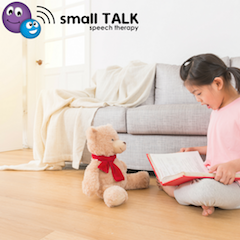
Many parents understand the importance of book reading each day with their child but…
What happens if your child doesn’t like books?
How do you use books to build skills?
What if you can’t keep their attention for the whole book?
Use eye contact and facial expression ensuring that your child is looking at you as well as the book.
Use sound effects and suspense.
Instead of asking endless questions about what’s happening in the book make comments such as “Oh wow” “look at that” “He’s a bit silly”.
Talk about the content of the book that relates to your child’s life. For example if the story is about the beach you could say “we like going to the beach” “you like building sandcastles like this boy” “remember when we found a starfish at the beach?”
As long as your finger isn’t blocking the pictures and interrupting engagement try to point out key words such as “bear” and then point to the bear in the picture. This build your child’s understanding that text has meaning.
Sometimes books are silly and have a strange orientation. Keep in mind when choosing books that we want your child to learn that text starts at the top of the page and that we read from left to right.
There are soooo many types of books I’m sure you’ll find something your child enjoys. Try flap books, touch and feel books, books about your child’s interests and favourite characters.
When children are young we tend to focus on naming items more than any other vocabulary. Don’t forget to emphasis actions (jumping), describing words (huge) and positions (on top) in the story too.
Pause often during the story to give your child a chance to make a comment or have some input. Use brief leading comments such as “oh, uh” “oooo” “woah” “wow”
If your child isn’t saying much or is hard to understand they can still contribute. If your child points to something in the picture and grunts – you could say “Oh yes it’s a dog” “you could say ‘dog.’
Use a variety of books and book types. Use objects that are related to the story to act some of the parts out, use puppets, make actions related to the story e.g. rain fingers on child’s head if the story has a storm.
Comment, Ask and Respond;
Comment, wait 5 seconds to see if your child makes their own comment.
Ask a Question, wait 5 secs to see if your child answers the question
Respond by answering the question such as “oh you could have said dog” “he saw a dog”
Don’t force your child to finish the book. If your child is not engaged or interested the key is to find other ways to engage them for longer periods of time using these strategies. Forcing your child to finish the book with you may make them resist further reading opportunities.
We’ve all heard the once a day reading rule. But if your child isn’t engaged because they’re too tired or just not in the mood for books try again later. This might mean you attempt book reading tasks multiple times a day to find a time and way it can be successful.

Remembering these tips during book reading with your child can be tough but if you keep practicing it will become a very natural interaction for you and your child during story time.
Check out some of our favourite books here.
Happy Reading!